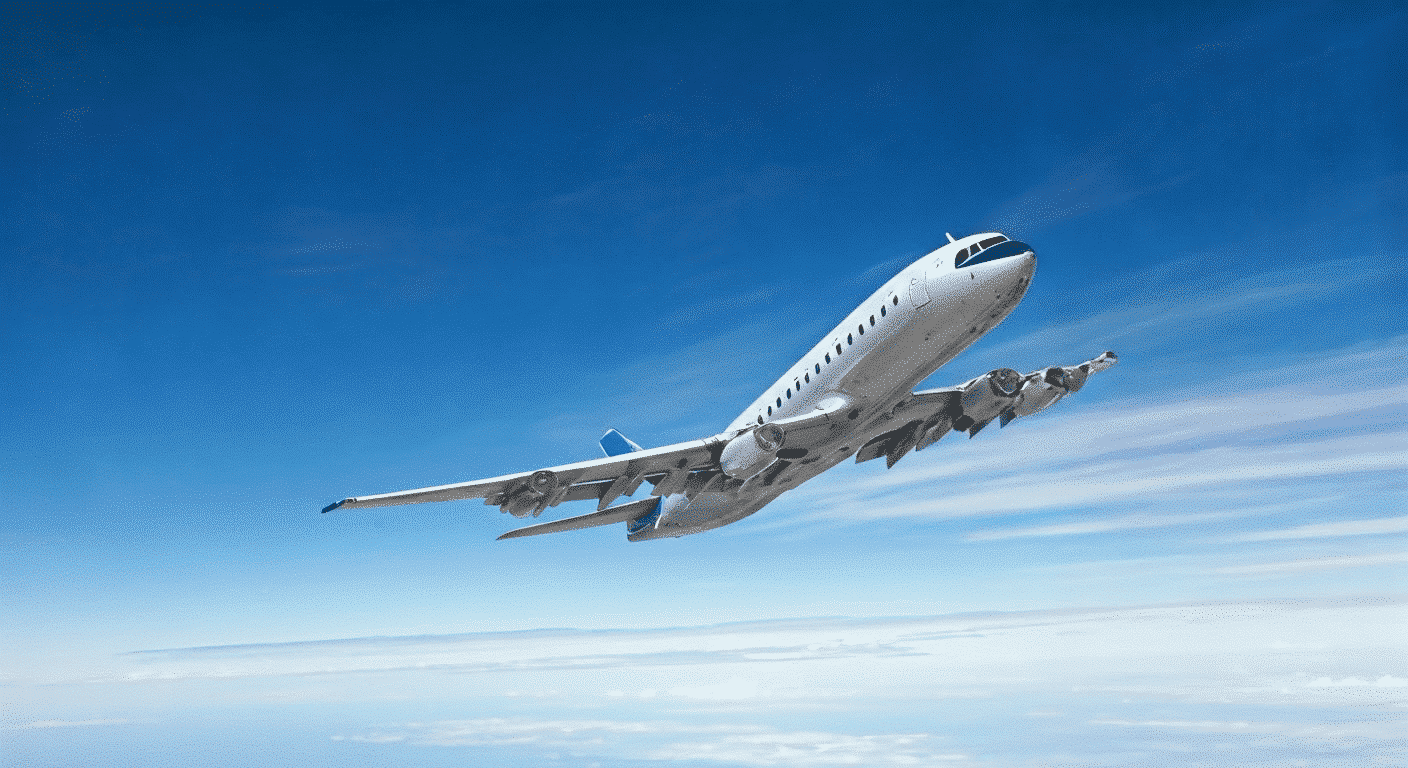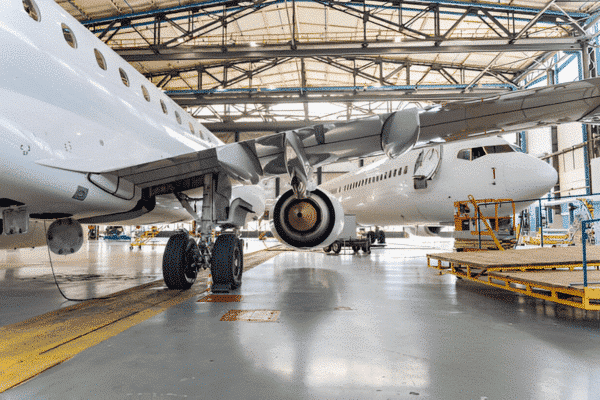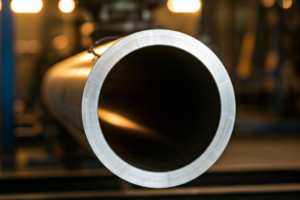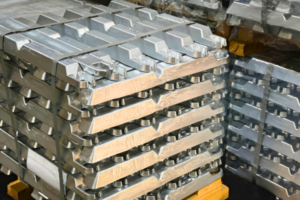Key Highlights
Aircraft aluminum alloy is strong and light. This quality makes it great for aerospace applications.
- This alloy has high corrosion resistance, helping it last longer in tough conditions.
- Heat treatment can make these alloys stronger and tougher.
There are different grades of aircraft aluminum alloy, each designed for specific aerospace needs.
- Using aluminum alloys in aircraft builds improves fuel efficiency and reduces emissions.
- Ongoing research aims to develop even lighter and stronger aluminum alloys for future aerospace applications.
Introduction
In the aerospace industry, aluminum alloy is a popular choice for making key parts of aircraft. It is both strong and light, helping create lighter planes while maintaining their strength. This quality is important for improving fuel efficiency and lowering the total weight of the aircraft.
Understanding Aircraft Aluminum Alloy
Aircraft aluminum alloy is a special material made for tough aerospace applications. It is stronger than normal aluminum alloys. It also has excellent corrosion resistance and good fatigue properties.
We get these special features by carefully adding elements like copper, magnesium, zinc, and manganese. This combination forms an aluminum alloy. This alloy is strong enough to face harsh conditions while flying. It can deal with temperature changes, high stress, and different environmental factors.
The Role of Aluminum in Aviation History
The use of aluminum in planes started when powered flight began. The Wright brothers were really important in the history of aviation. They used aluminum castings for the engine block of their plane. This proved that aluminum is very useful for making airplanes.
As aviation technology improved, people wanted lighter and stronger materials. This need led to the creation of aluminum alloys like duralumin. Duralumin became very popular, especially in military aircraft during World War II.
Today, leading aluminum factories create high-quality aluminum alloys that meet the changing needs of the aerospace industry. Because of this, aluminum is still a key material in aviation science.

Key Characteristics of Aircraft Aluminum Alloy
Aircraft aluminum alloy is known for being strong and light. This is very important in aerospace applications. A lighter weight helps improve fuel efficiency and provides more space for carrying cargo.
Another important point is that it has high corrosion resistance. Aircraft work in tough weather, such as wet conditions and changes in temperature. Good corrosion resistance helps ensure that aircraft parts last longer and remain strong.
Aircraft aluminum alloy is great for welding and shaping. It allows manufacturers to create complex parts that remain strong. This ease of making parts is why the alloy is very helpful in aerospace applications. GET A QUOTE
The Role of Aluminum Alloy in the Spacecraft Industry
Aluminum alloy is a crucial material in spacecraft construction due to its unique properties such as lightness, strength, and workability. Most spacecraft are comprised of up to 90% aluminum components, making it an integral part of space exploration. Its capability to handle powerful loads and stresses during launch and operation makes it an ideal choice for spacecraft structures. Aluminum has played a significant role in the development of space stations like Skylab and is expected to continue being a key component in manned space missions.

What Is Heat Treatment Aging of Aircraft Aluminum?
Heat treatment aging is an important step in strengthening aircraft aluminum. In this process, the alloy is heated and then cooled in specific ways, changing its small structure. This change helps the aluminum have high resistance.
This aging method improves the strength and hardness of the alloy and helps it resist cracks caused by corrosion. Heat treatment aging ensures that parts made from aircraft aluminum can handle the tough challenges of flying.
Types and Grades of Aircraft Aluminum Alloy
Different kinds of aluminum alloys for aircraft are used in several aerospace applications. Each type has a four-digit number. This number shows the elements in the alloy and the way it was processed.
Some common grades are 2024-T3 and 7075-T6. The 2024-T3 grade is very strong and can fight off fatigue well. The 7075-T6 grade is also popular because it has great strength, making it useful for important structural components. Choosing the right grade is important. It helps ensure that the aircraft works well and meets its design needs. GET A QUOTE
2024-T3: The Standard in Aerospace
The 2024-T3 aluminum sheet is popular in the industry and is important for aerospace applications. This aluminum offers a good mix of strength and wear resistance and is also easy to work with. We can get this aluminum in different shapes, like sheets, plates, and extrusions. This variety makes it essential for many parts of aircraft.
This strong alloy is often used in parts like wing skins, fuselage panels, and other structural components. Its excellent fatigue resistance helps it handle repeated stress very well, which is important for planes that take off and land often.
2024-T3 aluminum is easy to cut and shape, which helps make detailed and complex shapes important in aerospace designs.
7075-T6: Known for high-strength
7075-T6 aluminum is really strong. It is one of the toughest aluminum alloys available. Its strength and ability to resist wear make it a favorite choice for important parts used in aerospace applications.
7075-T6 aluminum is commonly found in fuselage frames, wing spars, and landing gear. Its high strength and favorable strength-to-weight ratio make it an ideal material for keeping aircraft weight low in design. Additionally, 7075-T6 aluminum is easy to work with, allowing for efficient shaping and manufacturing of necessary components.

6061 & 6063 T6 Properties
6061 and 6063 aluminum alloys are known for their strong and corrosion-resistant features. They are easy to weld and have decent strength when heated to the T6 temperature. Here are some key properties in a table:
| Property | 6061-T6 | 6063-T6 |
| Tensile Strength (ksi) | 42 min | 35 min |
| Yield Strength (ksi) | 40 min | 30 min |
| Elongation (%) | 12 min in 2 inches | 8 min in 2 inches |
| Ductility | Good | Very Good |
| Toughness | Good | Very Good |
| Machinability | Good | Excellent |
| Weldability | Good with proper procedures | Very Good, commonly extruded |
Their ability to be shaped and worked on is highly regarded, which helps make manufacturing simpler. They can also be used in many ways, from aircraft parts to fittings inside the cabin. GET A QUOTE
Conclusion
Aircraft aluminum alloys have greatly improved aviation. They are strong, long-lasting, and lighter than most materials. Understanding the history, features, and types of these alloys is important for both aircraft manufacturers and fans. The heat treatment aging process makes these alloys even better. For example, 2024-T3 and 7075-T6 are popular because of their excellent qualities. Also, these alloys can be recycled, which is beneficial for the environment. The future looks bright for aluminum alloys, as they will help aviation run more smoothly and perform even better. Keep updated on aircraft aluminum by reading our detailed guide.
Why Choose Us
At Linsy Aluminum, we pride ourselves on being a leading aluminum manufacturer and supplier in China. We offer premium aluminum products for industries such as aerospace, automotive, and construction.
With advanced technology and strict quality control, we specialize in high-strength, corrosion-resistant alloys like 7075-T6, 2024-T3, 6061-T6, and 6063-T6, ensuring top-notch performance for every application.
Our aluminum factory is equipped to meet global demands, providing customizable solutions with a reliable supply chain and competitive pricing. As a premium aluminum brand, we’re committed to sustainability by offering recycled aluminum and eco-friendly production methods. Choose Linsy Aluminum for high-quality, reliable, and sustainable aluminum solutions backed by exceptional customer support.
Frequently Asked Questions
Why is aluminum preferred in aircraft manufacturing?
Aluminum is light but strong. It does not rust and is flexible, which makes it easy to work with. These qualities make aluminum a great choice for building airplanes. It helps create aircraft that are safe, save fuel, and last a long time.
What makes 7075-T6 aluminum ideal for aircraft?
7075-T6 aluminum is very strong and does not rust easily, making it a good option for demanding aerospace tasks. Many people use this alloy in airframe structures that need added strength.
Can aluminum alloy be recycled from decommissioned aircraft?
Aluminum alloy from old planes is simple to recycle. Recycling aluminum uses much less energy than making new aluminum. This helps the environment and creates high-quality aluminum products.
How does the manufacturing process affect aluminum’s properties?
Manufacturing methods like heat treatment and extrusion play a big role in how strong and flexible aluminum is. These processes can strengthen aluminum and make it tougher, making aluminum a better choice for aerospace applications, especially for making strong wing skins.











